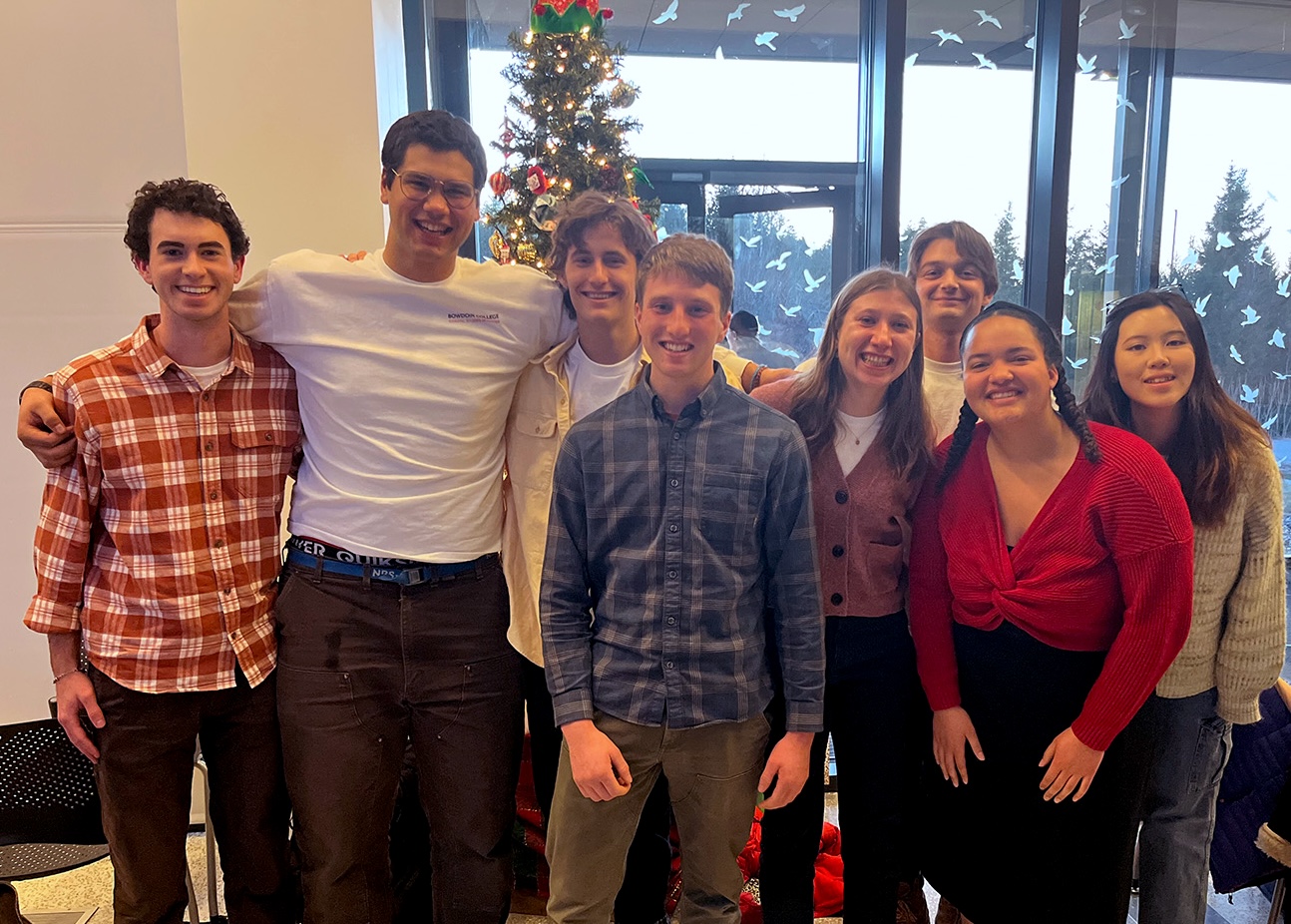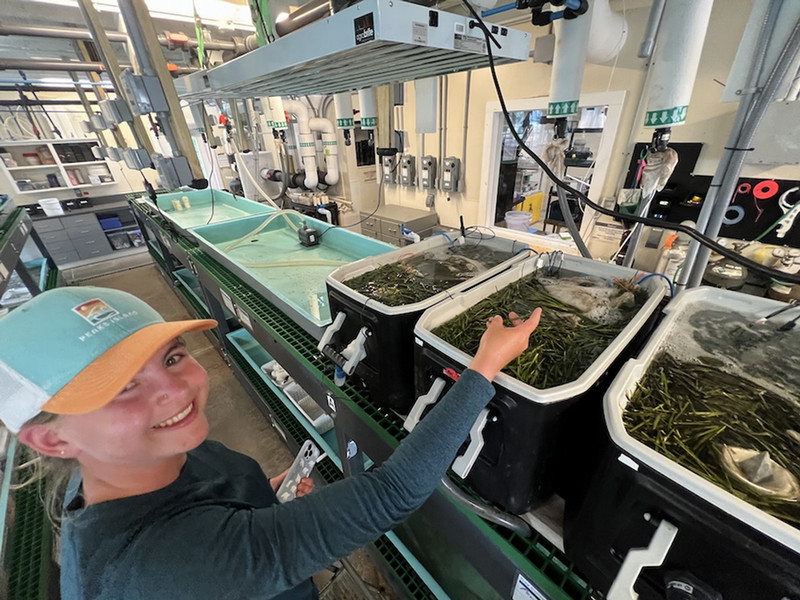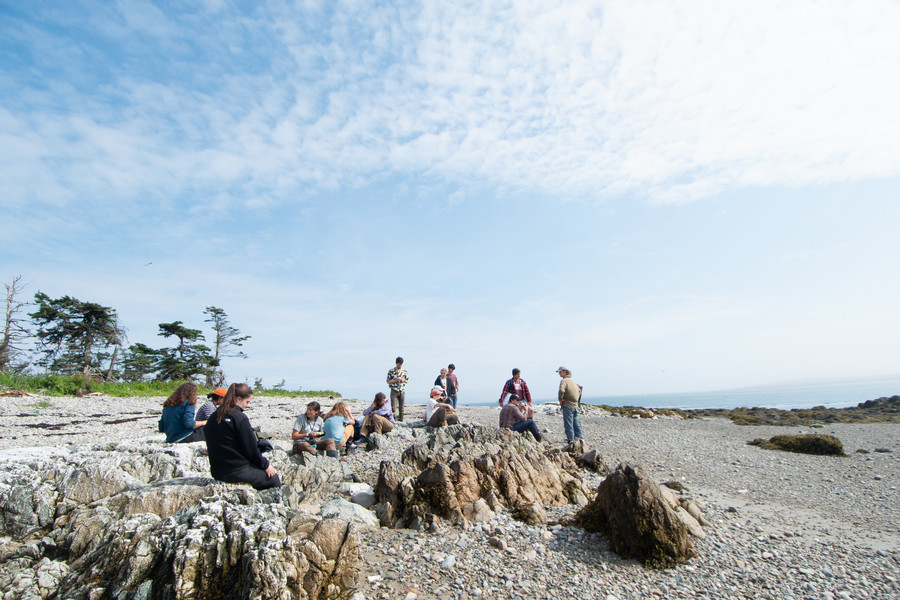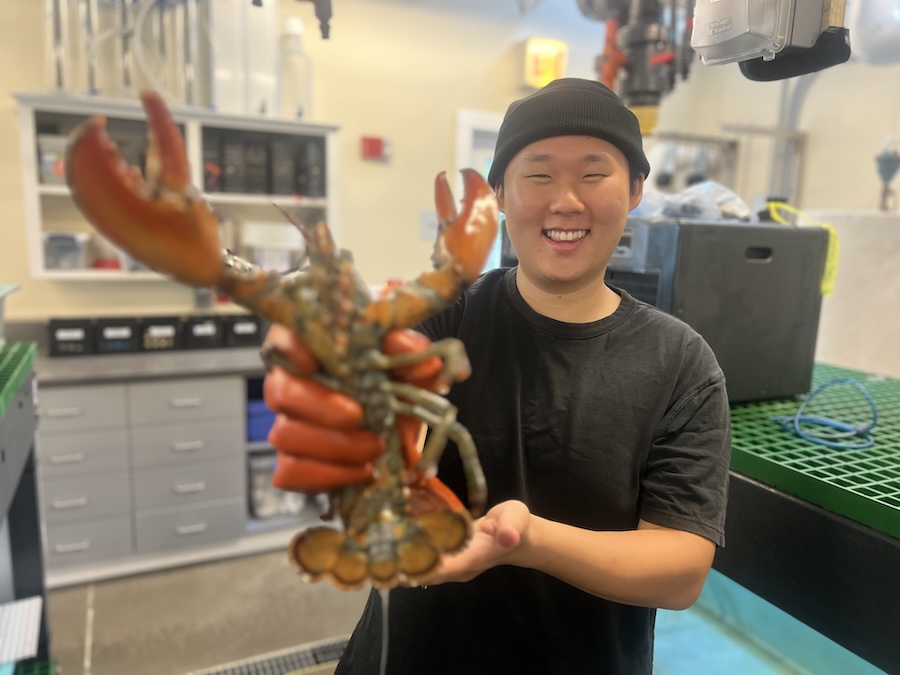Coastal Studies Span Walking Crabs and Artful Tourists
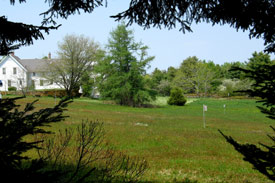
In large, clear plexiglas tanks, green crabs are dancing a fierce underwater ballet. Spiny green sea urchins—from pin-sized to handful—wait for a feeding of kelp. At the nearby boat dock, a diver suits up for a day of data-gathering in Harpswell Sound. Across the meadow, a solitary artist sets up an easel.
Unless you knew about Bowdoin's Coastal Studies Center, you would hardly guess such an interesting, bucolic place exists less than 15 miles from campus. But that's part of what makes it work.
The 118-acre saltwater property offers a pristine haven for scientists, artists, environmentalists, historians and all manner of researchers exploring coastal topics.
While a wet marine lab and pier are a major focus for biological and environmental research at the property, the historic saltwater farmstead also includes an art studio, terrestrial lab, and farmhouse-turned-classroom. A network of walking trails crisscrosses woodlands and fields, leading down to 2.5 miles of intertidal shoreline.
On this day, a close-knit community of CSC undergraduate research fellows—most of them Bowdoin students—are presenting preliminary findings from their summer research and art work. Wearing flip-flops and shorts, they sprawl on sofas in the coastal studies farmhouse awaiting their turn. Among them, are faculty members across disciplines who may challenge their research methods and findings.
Sam Hankinson '10 discusses his preliminary work on marine algae. He is one of a team of researchers, led by Bowdoin geologist Ed Laine, who are crunching data obtained from a buoy in Harpswell Sound to try to forecast occurrences of harmful algal blooms (HABs), which can cause red tides.
Emily Norton '10 follows with a lively presentation on crab mobility. "Although terrestrial walking has been well studied, underwater walking has not," she begins, projecting a short video of crabs crawling along a custom-designed walkway in the marine laboratory tank.
"Water has a greater density and viscosity than air, so walking in water is not only affected by the weight of the body, but also by the buoyancy, lift, drag and acceleration reaction."
The biology major/math minor is working on her Senior Honors research project with Biology Professor Amy Johnson and Biology and Mathematics Research Associate Olaf Ellers to improve mathematical models used to describe underwater walking, and predict what animal morphologies and densities are favorable.
To gather data for testing various formulas, the crabs' underwater walking is videotaped and entered into a software program. The formulas and films allow testing of predicted variables such as leg swing frequency, duty factor (the fraction of time that feet are in contact with the ground) and the speed at which a given crab will transition from walking to running.
At the end of her presentation, a member of the audience raises his hand. "This is fascinating," he says. "And it brings to mind recent press on the lunar walking problem." He hesitates and adds: "But I'm wondering if there is a greater problem this is solving?"
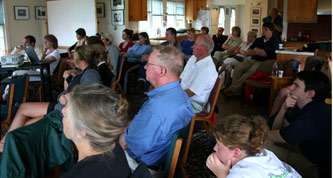
Norton answers his question with a smile. "Yes," she says. "Over the long term, there is interest in underwater walking with robots." This sends a small murmur of exclamation among the 30 or so audience members, some of whom are neighbors along the spruce forest leading to the Coastal Studies Center.
The coastal theme then takes a widely unscientific turn with Elissa Rodman's exhibition of paintings and photographs from her project titled, "Deconstructing the Perceived Realities of Maine's Identity."
Rodman, a rising senior, is making a study of the very people who come to study Maine—tourists. The 2009 Rusack Coastal Studies Fellow has snapped dozens of photos of tourists visiting Maine's most iconic tourist locales—Portland Head Light, Acadia National Park, Camden Harbor—all in pursuit of the "classic" Maine experience.
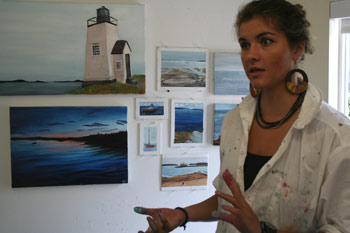
From her photos and studies, Rodman has produced an extraordinary outpouring of 35 canvases that track her pursuit of the "real Maine." In one, an iconic boiled lobster, in another, a sole ocean-gazer at the edge of Thunder Hole in Bar Harbor. Finally, she gives way the abstraction of the ocean itself, which she explores through many media, including some floor-cloth paintings measuring six by nine feet.
"I know it's easy to pigeonhole all tourists as ignorant of reality," she says. "But I'm seeing people interact with what they're seeing. I see people looking and seeing, they are so connected with what they're doing. It's a matter of boiling it down to the individual. Their experience becomes very specific."
All told, 19 students presented in the CSC summer series. Their work is funded in large measure through support from the Doherty Charitable Foundation and Rusack Coastal Studies Fellowship.
